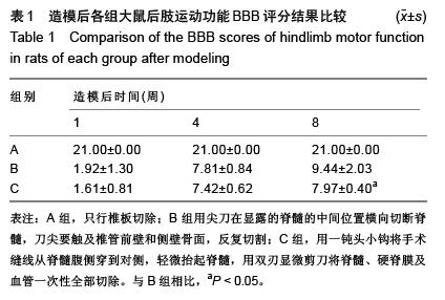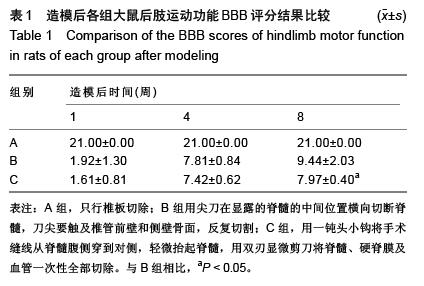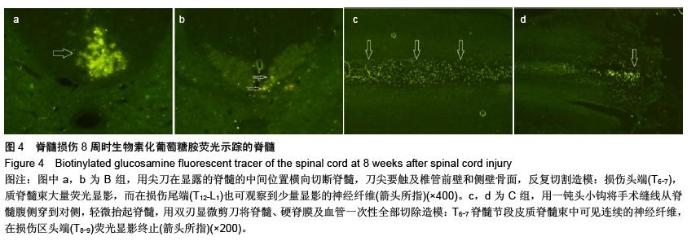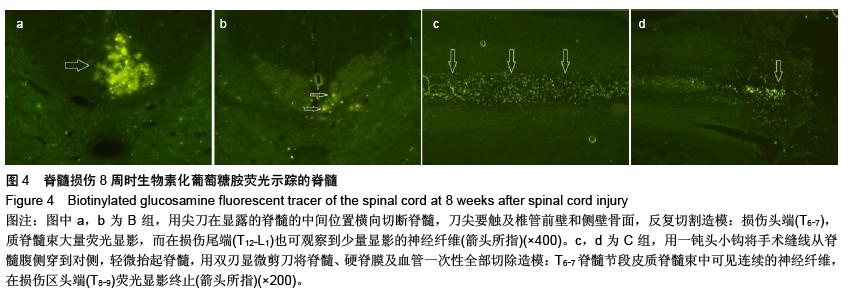| [1] 李建军,周红俊,洪毅,等.2002年北京市脊髓损伤发病率调查[J].中国康复理论与实践,2004,10(7):412-413.
[2] Silva NA, Sousa RA, Fraga JS, et al. Benefits of spine stabilization with biodegradable scaffolds in spinal cord injured rats. Tissue Eng Part C Methods. 2013;19(2):101-108.
[3] 王春婷,游思维,刘惠玲,等.成年大鼠4种脊髓全横断方法的比较[J].医学争鸣,2002,23:965-968.
[4] Basso DM, Beattie MS, Bresnahan JC. Graded histological and locomotor outcomes after spinal cord contusion using the NYU weight-drop device versus transection. Exp Neurol. 1996; 139(2):244-256.
[5] 龚标,李长清,李小凤,等.生物素葡聚糖胺对大鼠皮质脊髓束的顺行示踪技术研究[J].中风与神经疾病杂志,2007,24(6):687-689.
[6] Silva NA, Sousa N, Reis RL, et al. From basics to clinical: a comprehensive review on spinal cord injury. Prog Neurobiol. 2014;114:25-57.
[7] Han S, Wang B, Jin W, et al. The linear-ordered collagen scaffold-BDNF complex significantly promotes functional recovery after completely transected spinal cord injury in canine. Biomaterials. 2015;41:89-96.
[8] M'Dahoma S, Bourgoin S, Kayser V, et al. Spinal cord transection-induced allodynia in rats--behavioral, physiopathological and pharmacological characterization. PLoS One. 2014;9(7):e102027.
[9] Fehlings MG, Tator CH. The relationships among the severity of spinal cord injury, residual neurological function, axon counts, and counts of retrogradely labeled neurons after experimental spinal cord injury. Exp Neurol. 1995;132(2): 220-228.
[10] 陈秉耀,游思维,刘惠玲,等.大鼠脊髓切断术后神经纤维残留量与运动功能恢复的关系[J].解剖学报,2001,32(2):127-131.
[11] 尹文化,金大地,鲁凯伍,等.大鼠脊髓全横断损伤模型标准化的初步探索[J].中国临床解剖学杂志,2008,26(6):647-651.
[12] 孟步亮,巴迎春,宋士娜,等.脊髓全横断大鼠模型的构建[J].中国组织工程研究与临床康复,2011,15(7):1215-1218.
[13] 刘锐,游思维,刘惠玲,等.大鼠脊髓全横断损伤模型的建立[J].神经解剖学杂志,2005,21(3):263-268. |





